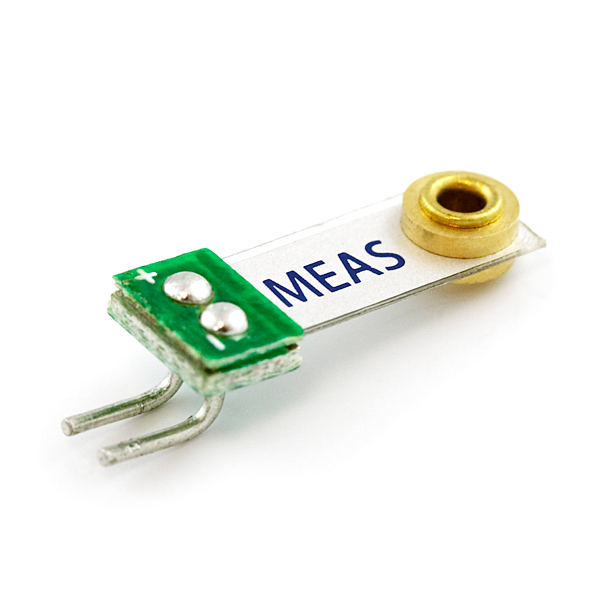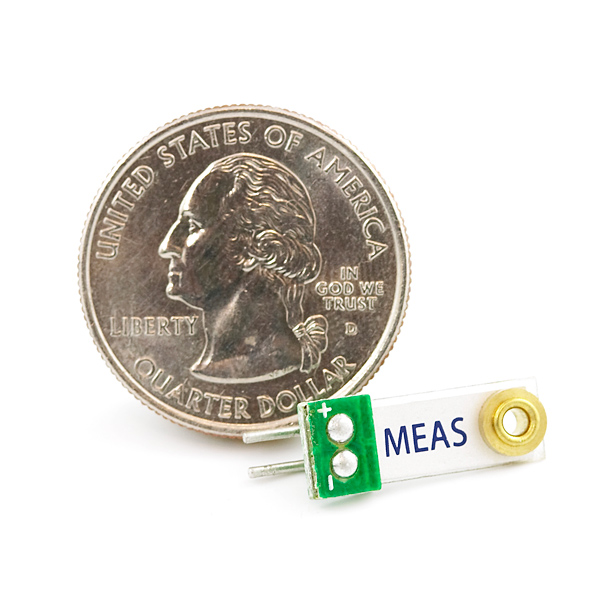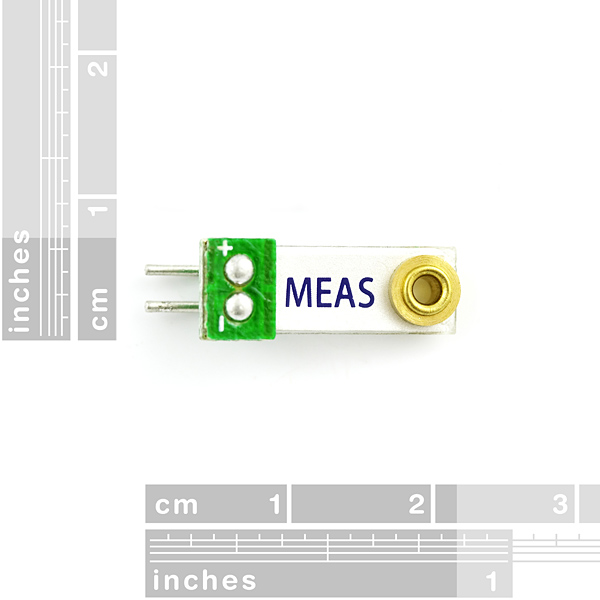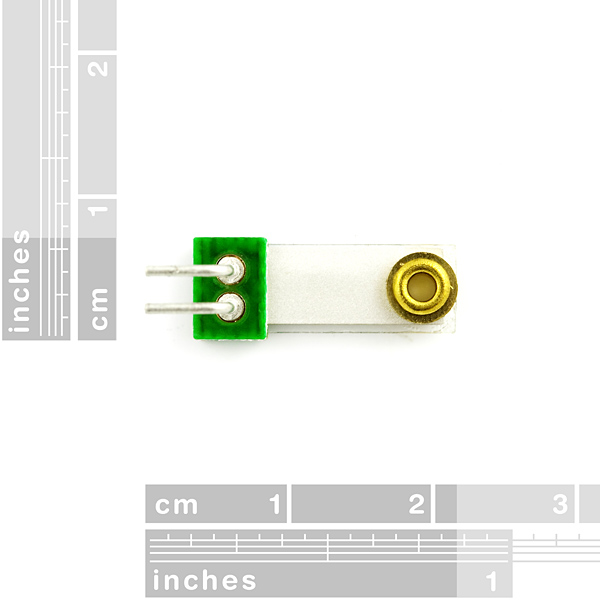Piezo Vibration Sensor - Small Vertical
The Minisense 100 from Measurement Specialties is a low-cost cantilever-type vibration sensor loaded by a mass to offer high sensitivity at low frequencies. Useful for detecting vibration and 'tap' inputs from a user. A small AC and large voltage (up to +/-90V) is created when the film moves back an forth. A simple resistor should get the voltage down to ADC levels. Can also be used for impact sensing or a flexible switch.
Comes with solder pins that allows for vertical mounting.
Features:
- Flexible PVDF Piezo Polymer Film
- Wide dynamic range
- Laminated for higher voltage output
- Breadboard friendly leads
Piezo Vibration Sensor - Small Vertical Product Help and Resources
Piezo Vibration Sensor Hookup Guide
May 5, 2016
How to combine a piezo sensor, high-value resistor, and an Arduino to create a vibration sensor.
Core Skill: Electrical Prototyping
If it requires power, you need to know how much, what all the pins do, and how to hook it up. You may need to reference datasheets, schematics, and know the ins and outs of electronics.
Skill Level: Noob - You don't need to reference a datasheet, but you will need to know basic power requirements.
See all skill levels
Comments
Looking for answers to technical questions?
We welcome your comments and suggestions below. However, if you are looking for solutions to technical questions please see our Technical Assistance page.
Customer Reviews
No reviews yet.





Is the output similar to a standard piezo in terms of audio/frequency spectrum?
Got a high sensitivity vibration sensor working nicely with Ardiuno Uno, including code to avoid false positives. More in my blog at http://davidhoulding.blogspot.com/2014/11/advanced-high-sensitivity-vibration.html
how to measure heart rate?
Do you think I can wire this Vibration sensor into a laser ammo bullet to release release an IR signal?
These are a great little piezo element. I use them when your classic round copper elements are just to big. I am currently using them as just a digital signal input so I don't actually get a force sensitive reading but alternatively I get just an on\off switch basically. Great little sensors with many applications.
These things will put out very little current. I'm only seeing a few volts maximum on the CRO. The CRO should have 10 meg or so of input impedance.
I'm hoping to use it directly into an interrupt pin so the micro can be in a deep sleep.
It will be a while before I set it up properly.
Microsoft found a cool use for these:
http://www.newscientist.com/article/dn18591-body-acoustics-can-turn-your-arm-into-a-touchscreen.html
I received this from my Arduino starter kit. How much voltage are you suppose to be getting from this thing?
And what is the best way to use it with an Arduino?
I checked out this
http://www.arduino.cc/en/Tutorial/Knock
it and a couple of other google finds all basically use the a piezo element as a voltage source and pull down resistor. At least I think that's what's going on here.
Regardless, wired up as above and a good whack with a finger only gives me an analog reading of at most 500 on the Arduino, mostly much lower readings of like 10-100. My meter hooked directly to the leads of the sensor only puts out like .1 volts max from a thump. I'm not sure if there is a problem with my wiring or my meter (maybe the voltage spikes too quickly for the meter to read?) but I'm not getting anywhere near 90V from this thing.
I've got this, if I knock it I get 1023 and sometimes 0 right after. Have you tried without the 1M resistor?
I don't have one so I used a 100pf capacitor instead which makes it vary between 0 - 55 when not knocked (wouldn't recommend it as a permanent solution). I also don't get anything with my meter.